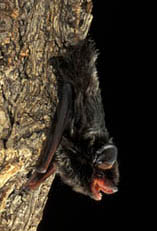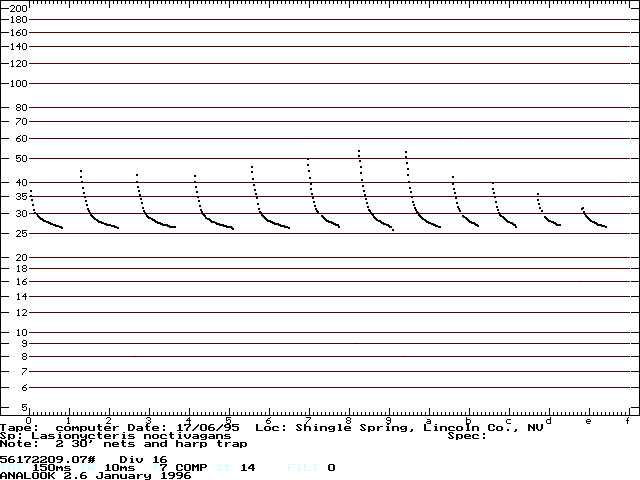
Description:
-
Weight: 1/4 - 3/8 oz. (8-11 g)
-
Body length: 3 3/4 - 4 5/8 in. (96-116 mm)
-
Wingspan: 11-13 in. (27-32 cm)
-
Forearm: 1 5/8 - 1 3/4 in. (40-44 mm)
The silver-haired bat is a medium-sized tree bat that has silver-tipped fur. Like other tree bats, the silver-haired bat has a furred tail membrane, though the hair is only lightly furred. The silver-haired bat has black wings and has been documented living up to 12 years.
Silver-haired bats are slow, leisurely flyers that occasionally hunt as a group.
Roosts:
-
Summer Roost: Silver-haired bats typically are not found in Maryland in the summer. They will roost under loose bark, in rock crevices, in clumps of leaves, in woodpecker holes, and sometimes in open sheds, garages or outbuildings.
-
Winter Roost: Typically, silver-haired bats in Maryland migrate south for the winter. Occasionally, some will stay and undergo short term periods of inactivity known as torpor. Silver-haired bats will spend the winter under loose bark, in rock crevices, in clumps of leaves, in woodpecker holes, in bird nests, sometimes open sheds, garages or outbuildings.
Diet:
Moths, true bugs, flies, mosquitoes, termites, and beetles.
Similar Species:
Hoary Bat is much larger with densely furred interfemoral membrane.
Conservation:
Silver-haired bats are listed as
species of greatest conservation need in Maryland. Their status in Maryland is
currently listed as unknown (SU).
Sounds:
Silver-haired Bat Call
Courtesy of Bat Call: Acoustic Call Library and Species Accounts
Silver-haired Bat Spectrograph

Echolocation Frequency: 26-38 kHz
Photo by: Dr. J. Scott Altenbach
Return to Field Guide to Maryland Bats